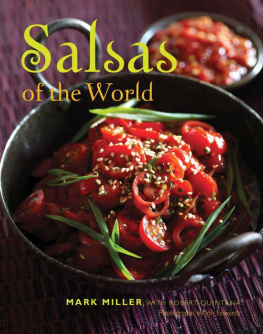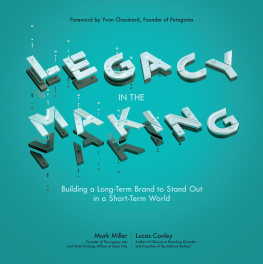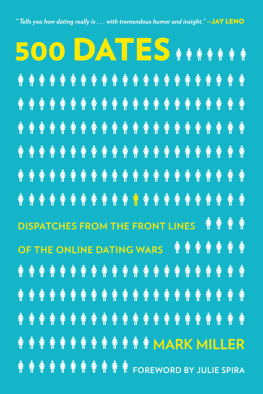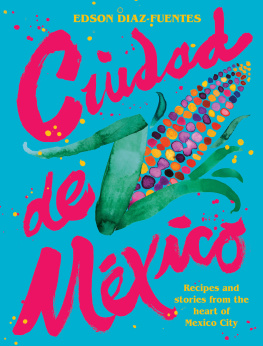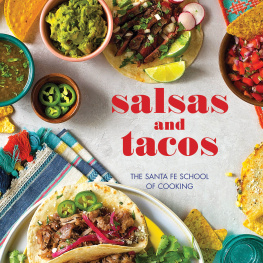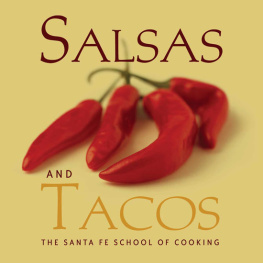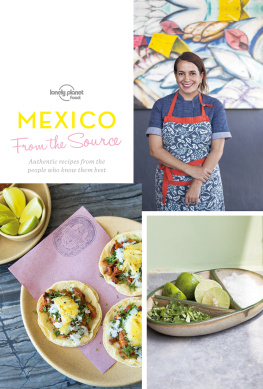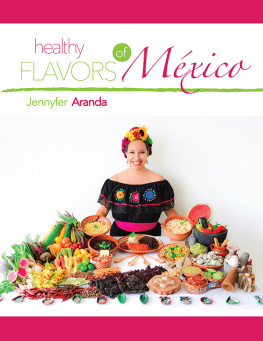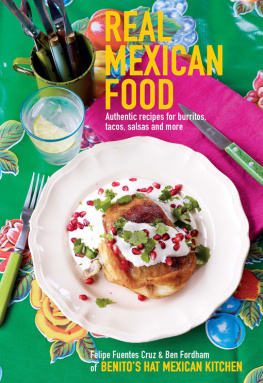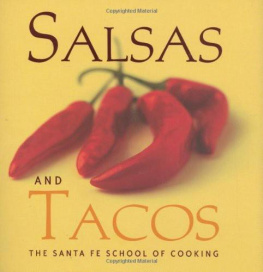All rights reserved. No part of this book may be reproduced by any means whatsoever without written permission from the publisher, except brief portions quoted for purpose of review.
P.O. Box 667
Introduction
I have been in love with the idea of salsas my whole life, as long as I can remember. I love the idea of adding something more to my food to make it tastier, more interesting, spicier, more colorful. To give food more edible textures and make it more fun to eat has always seemed like a great idea. More flavors were better at four years old and they are still better today. More is better! was and is one of my great slogans in the restaurants. I believe that we should strive for more meaningful, more interesting, and more creative experiences in food and in life. And when it comes to food, what is better than something that you add to make it taste better! Salsas can make food more pleasing. And when food becomes pleasingnot just a nutritional necessityit becomes a joy. You find out that food can make you happy!
The idea of playing with my food and creating new flavors at an early age wasnt always encouragedor seen as the necessary developmental steps of a great chefbut I was given a large amount of latitude because I had an insatiable curiosity about food and why it tasted like it did. I would pop lots of things in my mouth as a way of learning about it. Its what we all do at early levels of learning, but I have never stopped.
At the beginning of our food experiences, we play with food when it gets put on our plate. We maybe feel like we are supposed to eat it because it makes our mother happy. But sometimes we dont eat itbecause its green, or its bitter, or its too strong, or its too hot, or a hundred other reasons. The problem is it becomes an all or nothing approach to food. The main reason we dont eat certain food is that it is not what we like or want at the time. This can be hard to express when we are very young, and this problem can last our entire livessometimes people just dont know what it is they want to eat.

However, later in life, your big culinary breakout usually comes about when you get to choose what you like to eat. And you get really excited about food because now the possibilities of what you like just got a whole lot bigger. When you are a little older, you still dont go shopping and prep and cook all your own food, but you get to add ingredients to your dishes to make the food more what you like. So the food begins to reflect you and your tastes. You take more ownership in the process of creating flavors and foods that you are passionate about.
I remember from when I was very young that eating out was so exciting, not because I was going to a fancy restaurant or because it was good food, but because I got to order something that I wanted to eat. I got to choose. And I could spice it up to how I wanted to before I ate it. You can choose many different ways to build a hot fudge sundaeall vanilla ice cream one time; all coffee ice cream the next time; or with one scoop of coffee, one scoop of chocolate, and one scoop of vanilla the next time. You can use thick hot fudge and lots of whipped cream and leave the nuts off (which I discovered through trial and error interfered with the consistency and taste, and which I learned the scientific reasons for later on). A grilled hot dog was good, but a grilled hot dog with sweet honey mustard and homemade red-and-green piccalilli from my grandmothers pantry was a great hot dog, a memorable hot dog, one worth repeating, one worth looking forward to. We all have done that in our early eating lives: by trial and error created those flavors that are most satisfying. The trick is to keep creating them your whole life.
The lesson that I was learning early on was that good food became better when there was more to it. Another flavor added to the experience. I was becoming a flavor thrill seeker, developing a lifelong bent to seek out new flavors and new food experiences. I remember fried summer Ipswich clams from the Cape were wonderful, but the same yummy clams dipped into a creamy, tart, and sweet tartar sauce were fantastic! This was one of my first salsa experiences. Another was recognizing slices of roasted pork loin were tastier and sweeter with a homemade cinnamon-maple applesauce. The pork tasted better and the applesauce tasted more interesting when you ate them together. I was learning quickly that I liked my food experiences to have more flavors, more excitement, more mystery, and more fun than the normal kid. When it came to food, why be satisfied with less?
So my early culinary education started, and the more I created my own flavors the more interested I became in food, not just cooking it but eating it. I started in earnest to look for combinations of flavors that worked and tried to figure out the internal culinary flavor logic of each dish. I started with simple combinations: warm, velvety oatmeal with sweet maple syrup and rich, cold cream; peanut butter and jelly sandwiches; bologna with mustard; tuna fish salad with celery. I eventually moved on to more complex combinations: Maine lobsters cooked in seaweed with drawn butter; Polish sausages with sauerkraut; Italian sandwiches with meat, sauted sweet peppers and onions, and melted cheese. My first foray into the world of food outside of the familial was pastrami sandwiches on rye bread with kosher dill pickles on the side. I eventually moved on to beef tacos, then Indian curries, then Chinese chop suey. My culinary world was getting wider and the combinations of flavors that worked together to create these memories were also getting wider.
Later when I went to university at Berkeley (where I studied Art and Culture in the Anthropology department), I started to cook for myself full-time. I was further exposed to the rich ethnic food traditions of the Bay Area. I started to learn more about intricate, more complex flavor combinations and I started to incorporate those lessons into my cooking. My food experiences and my academic studies were complementary: they were both teaching me about how different cultures expressed themselves in varied ways and that there was no better or higher culture, but that almost every culture had created masterpieces of the human experience in some form or another. And when it came to cooking, I learned that each culture has some great food! There is certainly no monopoly of great tastes and great food from just one particular cuisine.
Part of what I learned during those years was that because I was limited in funds, I had to make my food taste fascinating without buying expensive prime cuts of meat or gourmet products. I learned to use spices and seasonings to make the difference, and learned that the mastery of flavors was the key to a rich food experience. The world of salsas became important to my success, as they could create a number of delicious bites in the same meal. Simple, inexpensive Indian samosas became magical with a tamarind chutney and fresh cilantro mint raita; a grilled skirt steak was scrumptious with salsa fresca; and vegetable couscous with the addition of harissa and a few Moroccan merguz sausages was as satisfying, and even more so, that many richly ornamented dishes from classic European cuisinesand a lot more affordable.

